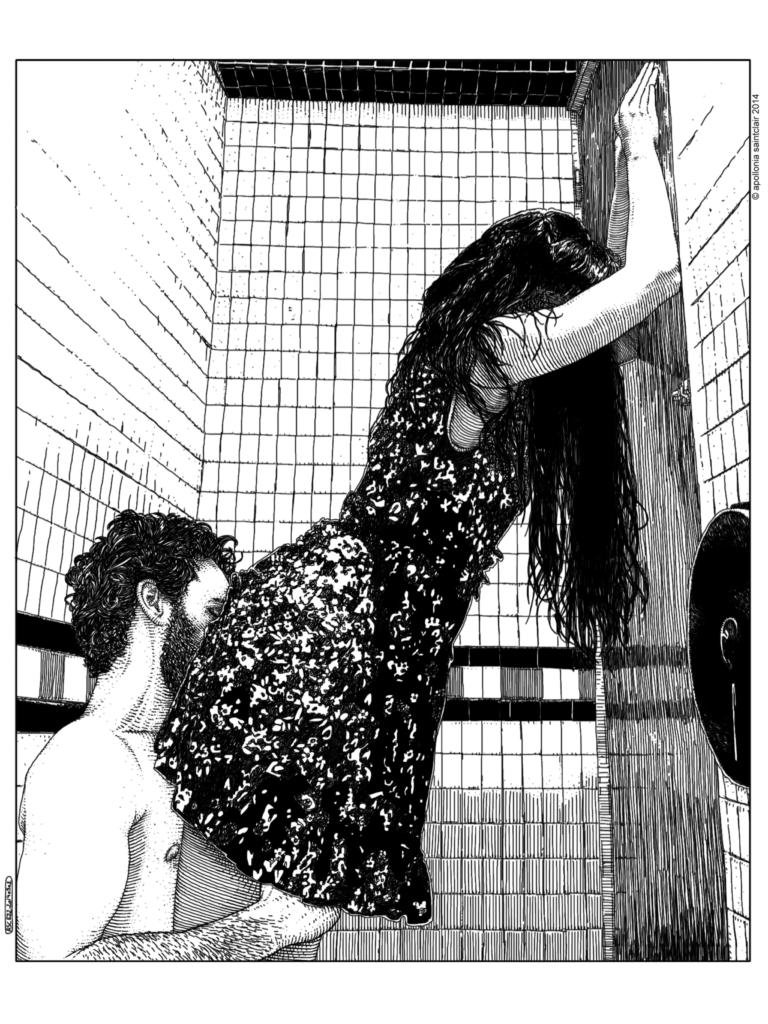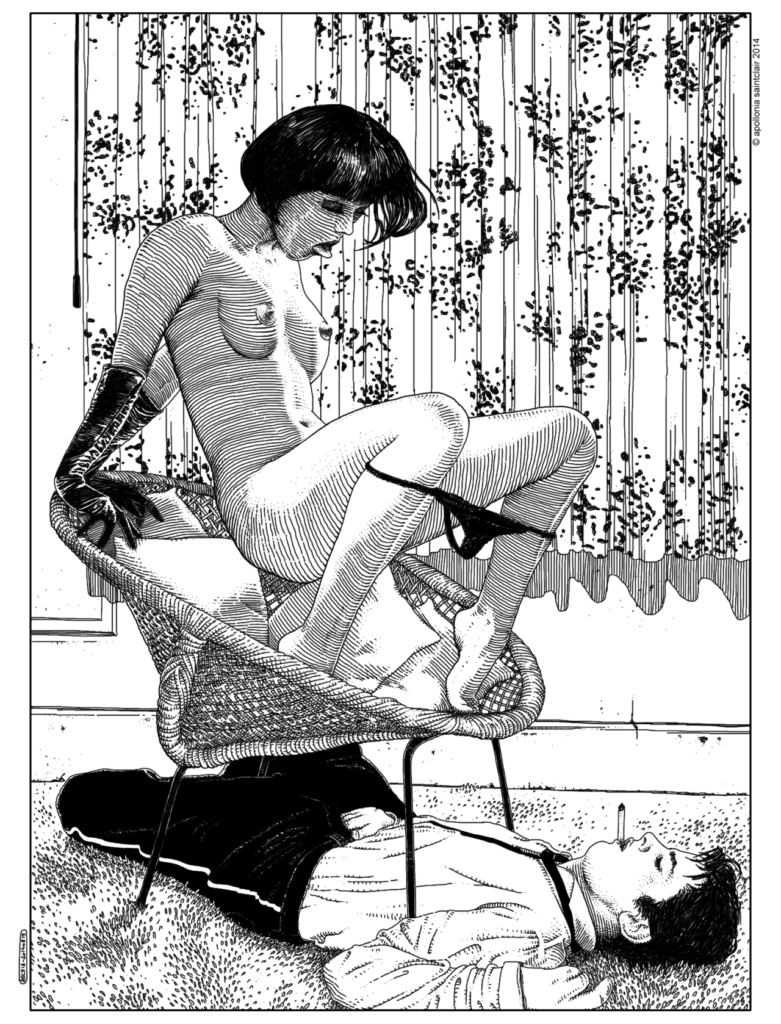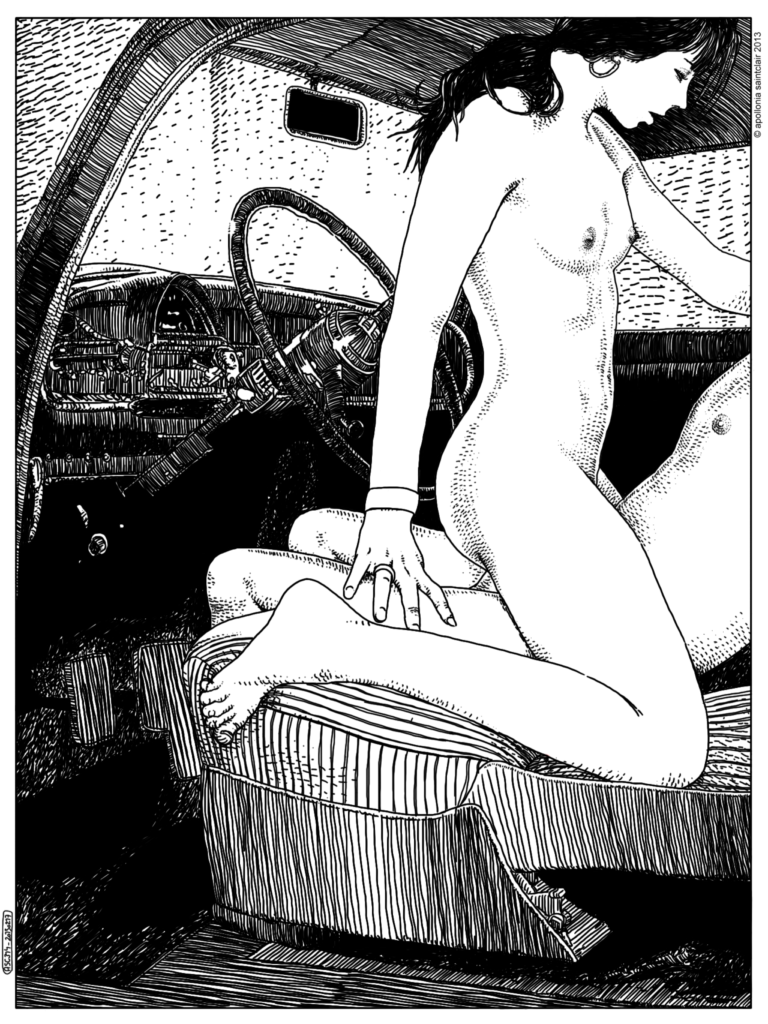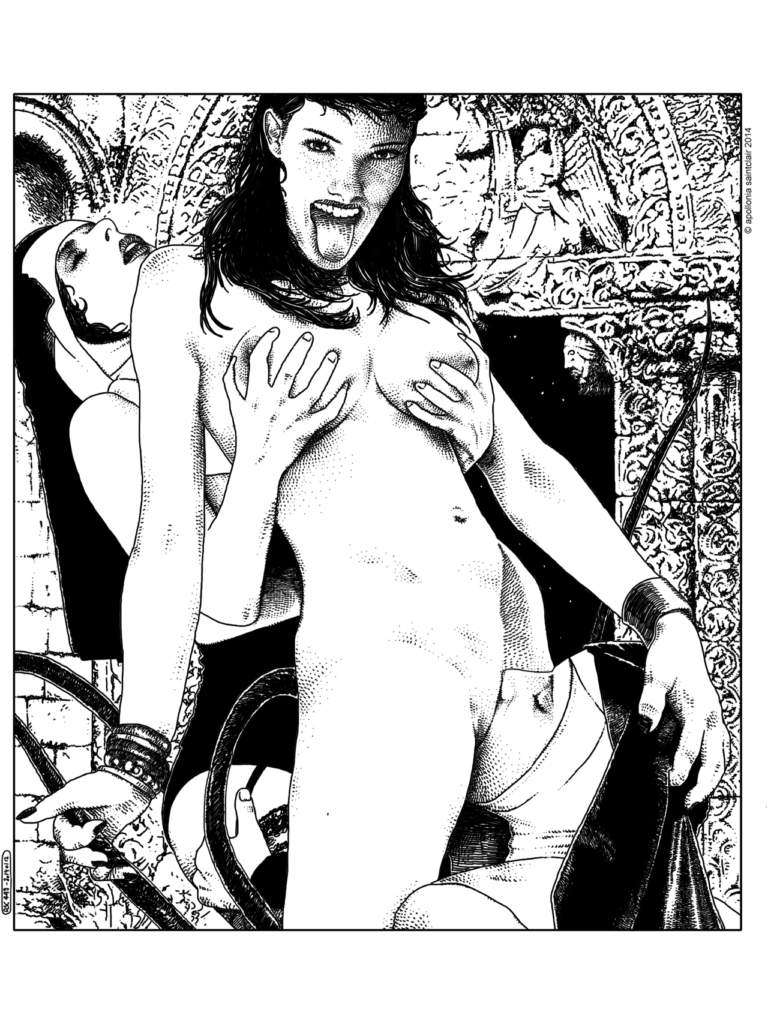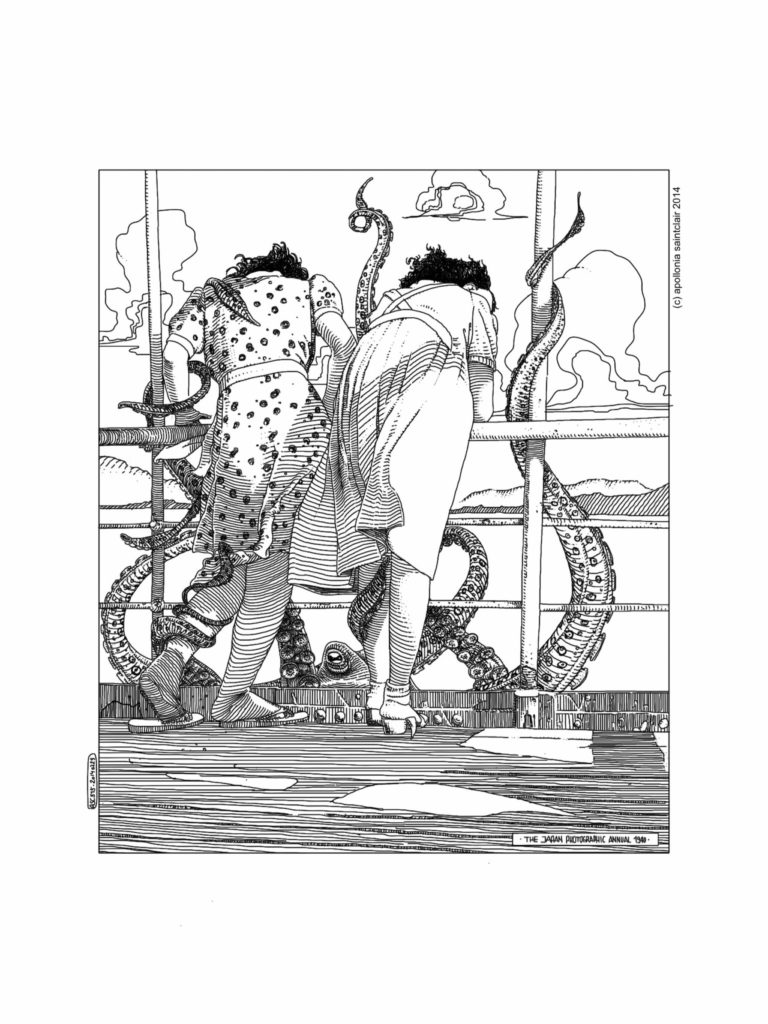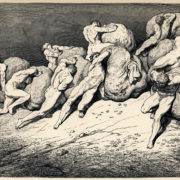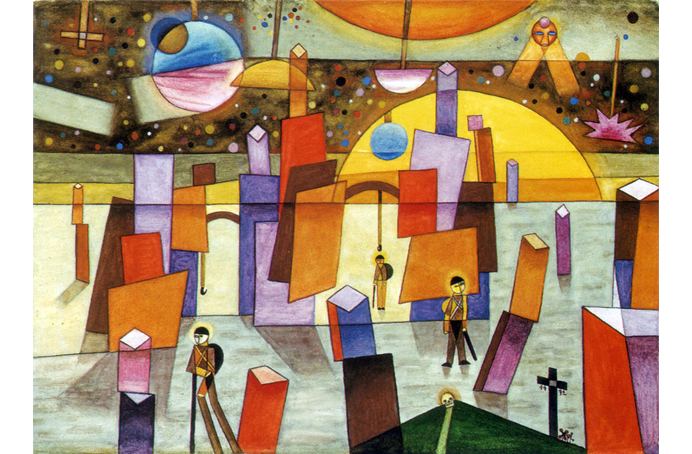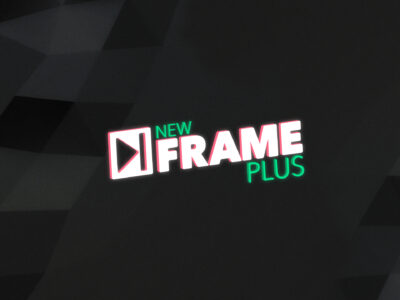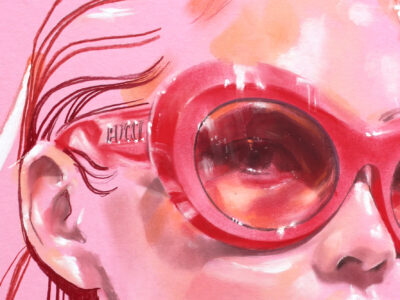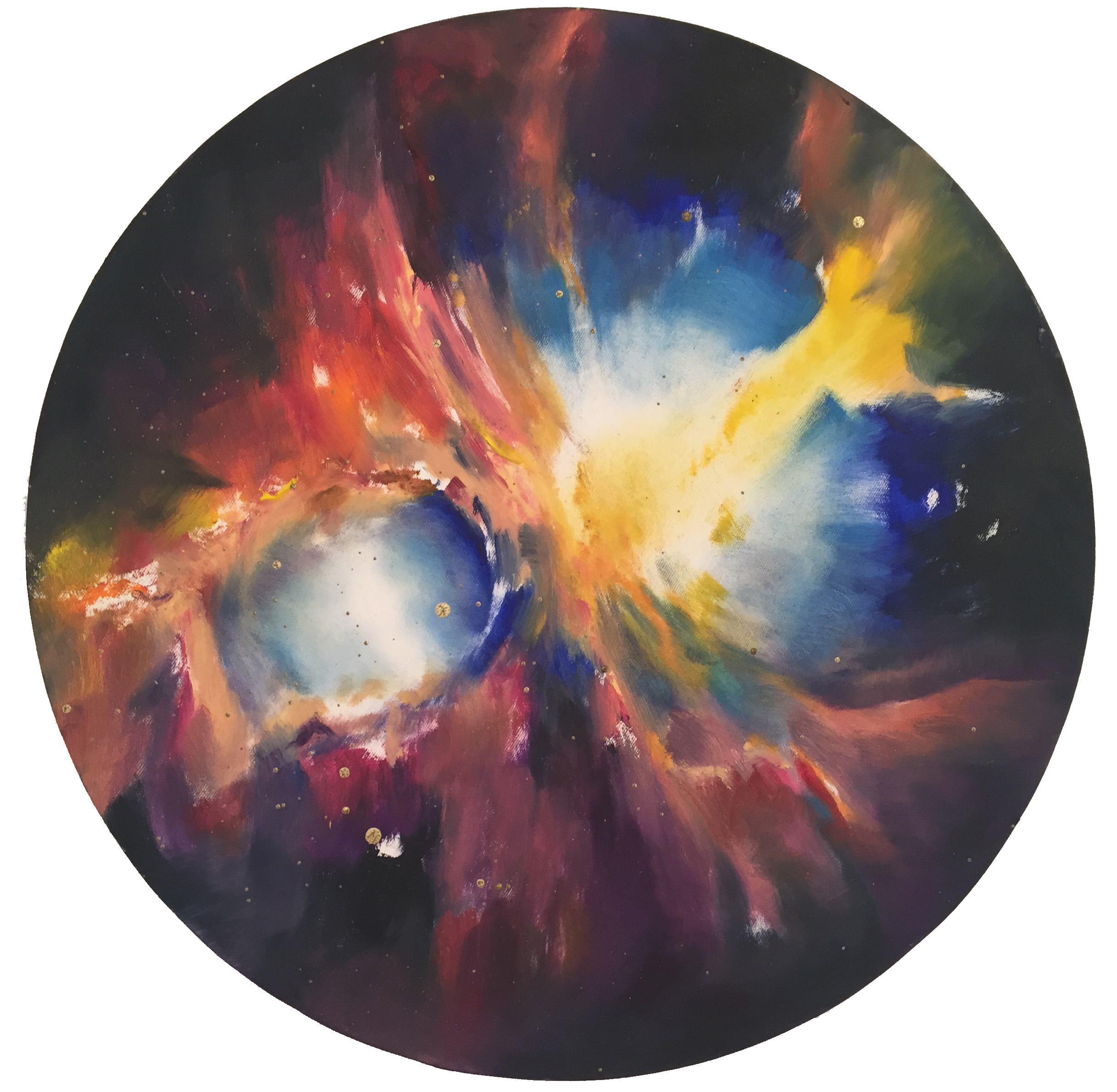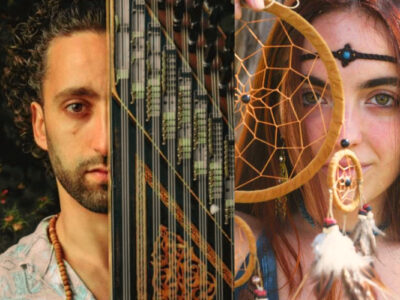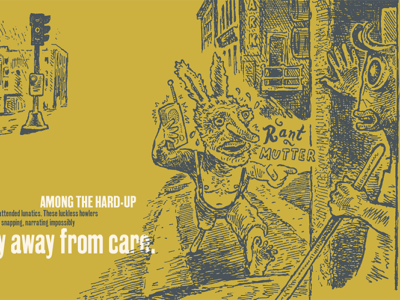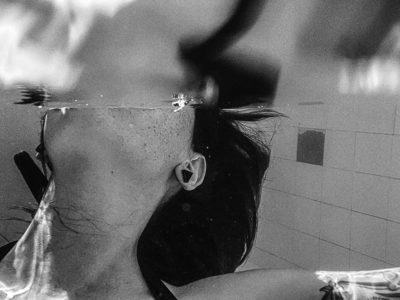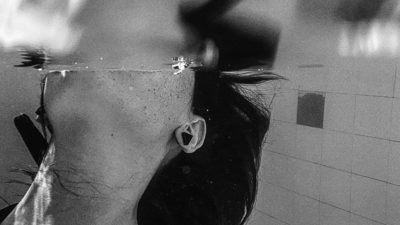A arte erótica de Apollonia Saintclair. A desenhista topou conceder uma entrevista para a R.Nott Magazine e falou a respeito dos múltiplos sentidos e sentimentos que movem a sua arte. Não deixe de conhecer o seu trabalho.
“Criar imagens é dar vida – uma existência independente de mim – aos personagens do meu palco interior.”
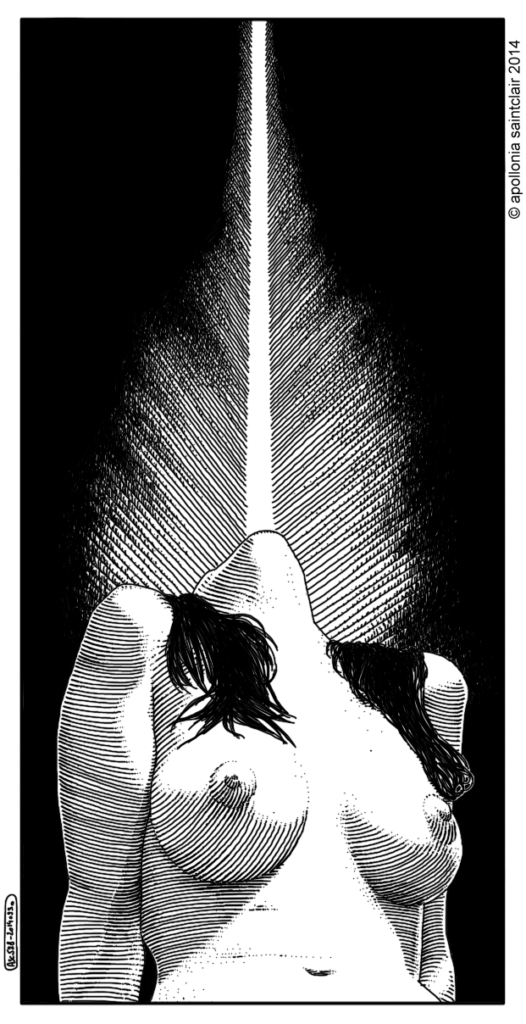
Le phare (Enlightening the world)
- Como, onde, quando e por quê.
Eu não falo com gosto a respeito de mim mesma por diversas razões, sendo a mais importante a que eu penso que os meus desenhos são muito mais importantes neste contexto que a minha pessoa. Digamos que eu me pus a desenhar na intensidade atual porque em 2012 eu finalmente percebi que queria ir além do nível do simples rabisco. Eu tenho desenhado regularmente desde então, não apenas por ser fascinada pelos comics europeus, mas por ter perdido o impulso para me mover em uma velocidade mais alta. Eu descobri o Tumblr por acidente enquanto procurava por imagens de referência, e comecei a postar desenhos sem maiores expectativas. O resultado foi… espetacular. A resposta apaixonada de um público completamente inesperado me fez perceber de repente que, se eu investisse tempo suficiente e, especialmente, se eu fizesse as coisas do meu jeito, teria a oportunidade de adquirir conhecimento técnico o bastante – o que eu achava que nunca conseguiria – para poder criar um mundo coerente – um mundo que pertence a mim e que eu posso compartilhar com outros.
- Por que você faz o que faz?
Essa é a pergunta de um milhão de dólares… Não tenho uma resposta simples para isso. Primeiro, eu desenho por prazer – seu e meu. Mas já que eu não poderia parar agora, mesmo que quisesse, eu acho que desenho por necessidade. Criar imagens é dar vida – uma existência independente de mim – aos personagens do meu palco interior. É uma experiência única ser capaz de colocar no papel aspectos muito privados e íntimos da minha vida mental, refiná-los e torná-los públicos, compartilhados e absorvidos por um público multifacetado. Talvez como uma misteriosa droga…
Mas falando sério, eu acho que a minha principal motivação é de fato a maravilha da expressão gráfica. Desenhar como uma jornada de aprendizado, como uma viagem gráfica a um mundo paralelo. Quando tenho uma ideia para uma imagem, a questão principal geralmente é “Como eu faria/Eu consigo desenhar isso?” e então “O que eu estou retratando aqui?”. Eu não vou negar que desenho figuras bastante eróticas, mas quando estou trabalhando, minha principal excitação está nas maravilhas da expressão gráfica. Como é possível que o seu cérebro possa criar sentido a partir de um ponto, de linhas ou de objetos discrepantes que por si sós são elementos absolutamente abstratos e neutros? Segue sendo um mistério – e com a minha caneta eu me sinto um tipo de aprendiz de feiticeiro com sua varinha, surpreso com o que foi capaz de evocar.
- La belle majorquine I (Roser Amills I)
- L’immobilisation (The entrapment)
- O que você costuma ouvir a respeito do seu trabalho? Qual é a recepção do público?
Como eu disse, eu era – e ainda sou – absolutamente impressionada com o feedback desse público inesperado. Fico muito satisfeita em ouvir que a maioria dos seguidores – entre eles muitas mulheres – não tem dúvida alguma que o que eu faço é uma abordagem artística da sexualidade, e não apenas pornografia barata. Na verdade o número de reações negativas é tão mínimo – sem contar alguns poucos machos ou fanáticos sem muito senso de humor – que pode ser facilmente ignorado.
- Quem são seus personagens, e de onde vieram?
As personagens femininas me interessam porque elas me permitem encenar a questão do poder de maneira ambígua. O termo ‘heroína’ me atrai porque a heroína é a definição própria de poder adquirido pela renúncia prévia de si mesma: sem sacrifício não há controle sobre o seu destino. Eu gosto de retratar mulheres fortes cuja nudez é a armadura que as faz invencíveis e cujo abandono é a alavanca que ergue o mundo.
O feminino eterno é um tema integral da história da arte, mas infelizmente o Ocidente escolheu ignorar por quase 2000 anos a complexidade e a variedade de personagens femininas, incluindo suas emoções, seus desejos e suas demandas. Mas ainda pior, os homens também acabaram esquecendo que seu relacionamento e seu papel com relação às mulheres também poderia trilhar um número de configurações inesperadas, e que eles também precisavam libertar-se.
- Qual é o seu processo, de criar a cena até publicá-la?
Eu trabalho compulsivamente. Vejo algo, uma situação ou foto, e o meu cérebro coloca outra imagem junto, e eu tento captar isso e colocar no papel o mais cedo possível. Para chegar no rascunho final eu uso tudo o que estiver ao alcance. Eu experimento, coloco juntos uma colagem de fotos de referência, observações e imaginações. Às vezes isso dura apenas algumas horas, às vezes semanas ou meses para que se alcance algo que pareça certo. Uma vez feliz com a composição, passo para a “tinta”, que nunca dura mais que um dia, se possível sem interrupções para trabalhar em outra coisa. E uma vez que o desenho esteja terminado, se estiver bom o bastante, publico sem pensar duas vezes. Eu geralmente não estou inteiramente satisfeita, mas coloco na web de qualquer modo quando sinto que não conseguirei fazer melhor no momento. Esse é o meu jeito de ser e permanecer uma novata: nada está perfeito; todo desenho é um passo em direção à melhora.
- L’aire de repos II (She couldn’t wait)
- La fripone divine (The Trickster)
- Materiais favoritos?
Hoje eu trabalho principalmente em meio digital. Eu realmente gosto da versatilidade da “tinta seca”, e o trabalho digital tem a grande vantagem de produzir desenhos que estão prontos para a publicação. A passagem obrigatória pelo escaneamento é eliminada e a imagem visível online é (quase) absolutamente fiel ao original.
- Como a literatura, a música, as artes e os quadrinhos se relacionam com o seu trabalho?
Minha maior inspiração vem provavelmente da literatura; eu nasci me alimentando de autores como Jorge Luis Borges, Guy de Maupassant, H.P.Lovercraft, Richard Matheson, Gustave Flaubert, Frank Herbert – e claro, Henry Miller e Anais Nin. Todas as minhas leituras deixaram em mim imagens latentes, apenas esperando para colidir com uma observação da vida real ou uma fotografia para se revelarem.
Quando terminei uma imagem e tenho que encontrar um título definitivo, eu geralmente pesquiso um pouco para poder entender intelectualmente o que eu fiz inicialmente pela intuição e também para encontrar links temáticos que conectem meu desenho a um tema. E, surpreendentemente, eu quase sempre encontro um mundo escondido naquela primeira intuição. Em “The Bakuss” por exemplo, eu sabia, ao ter começado o trabalho, que o desenho era sobre Dioniso, mas não sabia ainda que esse jovem deus era parte de um mito recorrente na bacia Mediterrânea, conectando uma longa série de personagens “nascidos duas vezes” relacionados a diferentes religiões, incluindo o catolicismo romano. Então desenhar é para mim contar histórias – alguns diriam até mesmo que seja contar a História. Toda imagem que crio é a soma de várias fontes diferentes que eu sinto terem uma linha em comum.
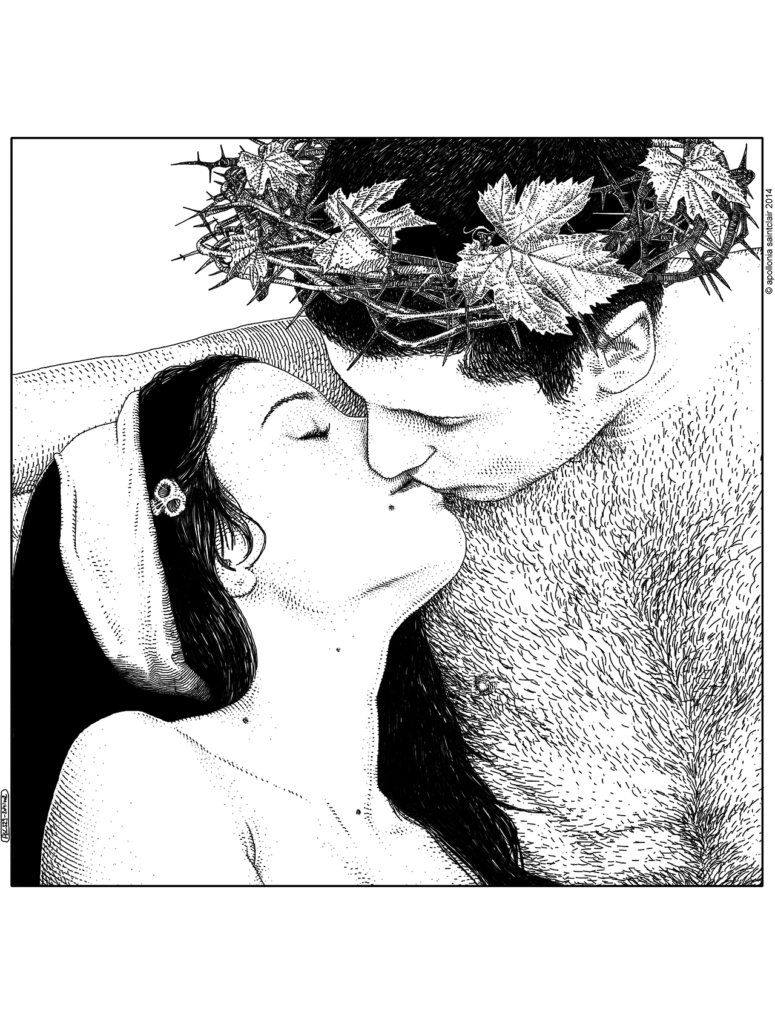
Le baiser du deux fois né (The Bakuss) – O BEIJO DE BACO
- Fale um pouco mais sobre o religioso, o grotesco e o violento em suas imagens.
Eu uso a religião e o grotesco como um alfabeto, como um bestiário profundamente enraizado no nosso subconsciente. Uma aranha ou a cabeça de uma vaca são mais que simples acessórios numa dramatização. Basicamente eu acho que a pessoa vê no desenho o que ela está preparada para ver. São arquétipos desenvolvidos ao longo da história da humanidade, totens que ativam sentimentos, associações e todo um mundo submerso, que é parte integral de nossa memória coletiva. Então, quando eu desenho temas religiosos, não é pra ser um comentário – positivo ou negativo – sobre sentimentos religiosos (que devem ser um assunto privado e individual). O que eu, sim, estou tentando despertar são as imagens escondidas que eles transportam. Pense novamente no “Bakuss”: ele se relaciona não só com a iconografia cristã, mas é também uma imagem recorrente, provavelmente tão antiga quanto a humanidade. Nós não podemos olhar imagens sem vê-las através de todas as imagens que já vimos antes. Quando eu vejo algumas fotos do Jim Morrison, por exemplo, não consigo evitar de pensar – conscientemente ou não – em um grande e festeiro Baco, pronto para morrer e renascer, como a primavera após o inverno.
Eu considero meu trabalho como positivo ao sexo, e a maioria dos meus seguidores parecem sentir o mesmo. Meus desenhos podem parecer violentos, mas são sempre ambíguos com relação a quem está realmente no controle. A sexualidade não é um negócio inocente flower power lindo tudo joia. A sexualidade pode ser uma coisa violenta – mesmo durante o ato mais gentil. Porque o sexo é um jogo de poder. Porque o sexo tem a ver com a vida. E a vida é um teatro violento, uma luta onde todas as possibilidades estão em jogo. Eu queria que todo mundo pudesse aceitar que uma imagem nunca deve ser tomada em valor nominal. É um insulto à inteligência parar aí e desistir de tentar entender – ou pelo menos reconhecer – a complexidade inerente oculta, a complexidade mesma das nossas emoções e da própria vida.
- La montagne sacrée (The sacred mountain)
- Inspired by a picture from the Japan Photographic Annual 1940
- Existem projetos futuros a caminho?
Tenho tido alguns projetos externos promissores aparecendo ultimamente, mas falarei deles quando forem publicados… Meu foco principal – meu mantra – segue o mesmo: desenhar e aprender. Aprender e desenhar.
- Maiores influências.
Bom, minhas principais influências gráficas são óbvias: os mestres insuperáveis, Moebius e Milo Manara, o Leonardo e o Caravaggio dos comics. Mas a minha admiração vai muito além de suas maestrias técnicas: o que eu gosto particularmente sobre os dois é que eles têm uma combinação imbatível de total comprometimento com os seus trabalhos sem perderem em momento algum o humor, a habilidade de não se levarem tão a sério, e a capacidade intacta de nunca pararem de querer aprender e se renovar.
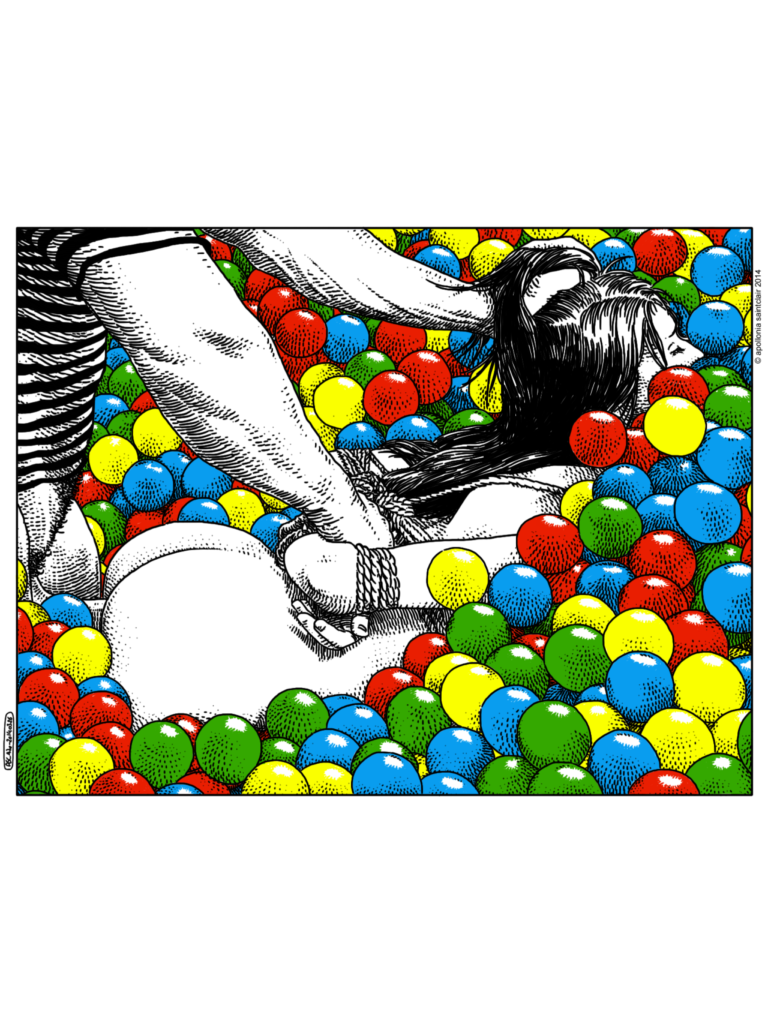
Les jeux interdits (Games allowed in the store after closing time)
Mais em:
https://apolloniasaintclair.com/
English Version
- How, where, when and why.
I do not gladly talk about myself for a variety of reasons, the most important being that I think my drawings are much more important in this context than my person. Let’s say I got to draw with the current intensity because in 2012 I finally realized I wanted to move beyond a harmless doodle level. I’ve been drawing regularly since ever, not least because I was fascinated by European comics, but I missed a trigger to move to a higher speed. I discovered Tumblr by accident while searching for reference images and I started posting drawings without special expectations. The result was… amazing. The enthusiastic response from an unexpected, unhoped audience made me suddenly realize that if I invested enough time and especially if I did it my way, I had the opportunity to acquire sufficient technical knowhow – what I thought I would never be able to – in order to create a coherent world – a world that belongs to me and that I can share with others.
- Why do you do what you do?
This is the million-dollar question… I have no single answer to that. First, I draw for pleasure – yours and mine. But since I could not get to stop now, even if I wanted to, I think I draw out of necessity. Creating images is giving life – an existence independent of me – to the characters of my inner stage. Being able to put on paper very private and intimate aspects of my mental life, to refine them and make them public, shared and absorbed by a multifaceted public is a unique experience. Maybe even a subtle drug…
But, more seriously, I think that my main motivation is in fact the marvel of graphical expression. Drawing as a learning journey, as a graphical trip into a parallel world. When I have an idea for an image, the main question is more often „How would/Can I draw that?“ then „What am I depicting there?“. I won’t deny that I draw very erotic pictures but when I’m working, my main excitement is about the wonders of graphical expression. How is it possible that your brain can make sense out of dot, lines or disparate objects which are per se absolutely abstract and neutral elements? It remains a mystery – and with my stylus, I feel like a sort of sorcerer’s apprentice with his wand, surprised by what he managed to evoke.
- What do you usually hear about your work? What is the public reception?
As I said I was – and still am – absolutely flabbergasted by the feedbacks of this unsuspected audience. I’m very pleased to hear that most followers – among them many women – have absolutely no doubts that what I do is an artistic approach of sexuality and not blank pornography. In fact the number of negative reactions is so minimal – apart from very few machos or bigots without much humor – that it can be ignored easily.
- Who are your characters? Where did they come from?
The female characters interest me because they allow me to stage the question of power ambiguously. The term heroin appeals to me because the heroine is the very definition of power acquired by the prior renunciation of oneself: without sacrifice, there is no control of your destiny. I like to portray strong women whose nakedness is the armour that makes them invincible and whose abandonment is the lever that lifts the world.
The eternal feminine is an integral theme of art history, but unfortunately the West chose to ignore for almost 2000 years the complexity and the variety of female characters, including their emotions, their desires and their demands. But even worse, men have also too often forgotten that their relationship and their role towards women could also take a number of unexpected configurations and that they also needed liberation.
- What is your process, from creating the scene to publishing it?
I work compulsively. I see something, a situation or a photo, and my brain put another picture together I try to catch and put on paper as soon as possible. To get to the final draft I use everything I can get my hands on. I sample, I put a collage of photo references, observations and imagination together. Sometimes it lasts just a couple of hours, sometimes even weeks or months to get to something that feels right. Once I’m happy with the composition, I go to the „inking“, which never last longer as one day, if possible without interruptions to work on something else. And once the drawing is finished, if it’s good enough, I publish it without second thought. I’m often not entirely satisfied, but I put it anyway on the web as soon as I’ve the feeling that I can’t do better right now. This is my way of being and staying a novice: nothing is perfect; every drawing is a step toward improvement.
- Favorite materials?
I do work mainly digital today. I really like the versatility of “dry ink” and working digitally has the major advantage of producing drawings that are ready for publication. The obligatory passage through scanning is eliminated and the visible image online is (almost) absolutely faithful to the original.
- How do literature, music, arts and comics relate to your work?
My biggest inspiration is probably literature; I was breast fed with authors such as Jorge Luis Borges, Guy de Maupassant, H.P.Lovercraft, Richard Matheson, Gustave Flaubert, Frank Herbert – and of course, Henry Miller and Anais Nin. All my readings have left me a number of latent images, just waiting to collide with an observation of real life or a photograph to be revealed.
When I’m finished with an image and I have to find a final title, I usually do some research in order to understand intellectually what I have done at first intuitively and to find the thematic links that connect my drawing to a theme. And surprisingly, I almost always find a world hidden in that first intuition. In “The Bakuss” for example, I was aware when I started the job that the drawing was about Dionysus, but I did not know yet this young god was part of a recurring myth in the Mediterranean basin, linking a long series of “twice-born” personages related to may different religions, including Roman Catholicism. So, drawing is storytelling for me – some would say even history telling. Every picture I create is the sum of very different sources that I feel having a common thread.
- Tell us a bit more about the religious, the grotesque and the violent in your drawings.
I use religion and grotesque as an alphabet, as a bestiary deeply rooted in our unconscious. A spider or a cow’s head are more than simple accessories in a role play. Basically I think that one sees in a drawing what he’s prepared to see. These are archetypes developed throughout history of mankind, totems which activate feelings, associations and a whole submerged world, which is an integral part of our collective memory. So, when I draw religious themes, it is not meant as a comment – positive or negative – at religious feelings (which should be a private and individual matter). What I’m rather trying to wake up are the hidden images they are conveying. Think again about the “Bakuss”: it relates not only to the Christian iconography, but it’s also a recurring image, probably as old as mankind. We can’t look at images without seeing them through all the pictures we have already seen before. When I see some photos of Jim Morrison for example, I can’t help to think – consciously or not – about a great feasting Bacchus, ready to die and to be reborn, like the spring after the winter.
I consider my work as sex positive and most of my followers seem to feel that way too. My drawings may look violent but they are always ambiguous about who is really in control. Sexuality is not an innocent flower power feel good wellness business. Sexuality can be a violent thing – even during the most gentle act. Because sex is a power game. Because sex is about life. And life is a violent theatre, a struggle where all the odds are in play. I wish that everyone would be able to accept that an image should never be taken at face value. To stop there and give up trying to understand – or at least acknowledge – the hidden complexity within, the same complexity as in our emotions, as in life itself is an insult to intelligence.
- Any future projects coming up?
I had some promising external projects coming in lately, but I will talk about it when they are published… My main focus – my mantra – remains the same: draw and learn. Learn and draw.
- Greatest influences.
Well, my main graphic influences are obvious: the unsurpassed masters, Moebius and Milo Manara, the Leonardo and Caravaggio of comics. But my admiration goes far beyond their technical mastery: what I particularly like about these two is that they have an unbeatable combination of total commitment to their work without losing a moment, their humor, their ability not to take themselves too seriously and their intact capacity to never stop wanting to learn and renew themselves.



